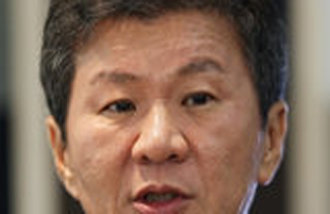[Opinion] Crowd Control
Scheduled to hold the plenary session of the International Monetary Fund from September 12 to 20, Singapore held an anti-protest drill in late July. Its first task is to disperse protesters with clubs and water cannons. Protests will be allowed only at two designated places. Of course, violent protests are prohibited. With no large-scale protest in place since the racial riot in 1964, Singapore is nervous over the possibilities that Korean and Taiwanese farmers might participate in protests. Police authorities stressed, We are equipped with the ability to quell protests which matches the level of violence of the protests.
The video clips of overseas protests by Koreans from TV news makes one worry that they might do the same thing as they have done in Korea. About 1,000 Koreans were arrested for violent protesting in December last year in Hong Kong, generating a bad reputation. They even snatched shields from riot police while attaching clear wrap to their eyes to block tear liquids and dodging the clubs of police. Photos of such scenes available on the Internet are not evidence of a heroic episode but a source of shame. They observed the designated time and place of protest in June in Washington only because they were well aware that U.S. police are forceful.
Korea has a quick pace of modifying equipments for protests. In a rally by Ulsan Plant labor union last year, even a two-or-three-meter long cart tank appeared. The 1.25-meter clubs of riot police are just useless when facing 2.5-meter bamboo spears and 1.5-meter iron pipes. Although the incidence of violent protests has decreased over the past few years, police casualties have soared because of increased extremely violent protests. The authorities adopted the principle of no tear gas and a police line in 1999 and the lipstick line with the participation of women police officers in 2000, but the effect of the measures was short-lived.
In a much belated effort, National Police Agency came up with an idea of firing tear liquids and arresting protesters at the scene in case of a violent protest. With the planned re-appearance of tear liquids for the first time in seven years, regular protest groups, including Korean Confederation of Trade Unions and Korean Peasants League, said, The plan will make protests get more violent and produce huge side effects. However, the reason that the authorities consider using the tear liquids again is the protesters violent inclination. The rule of law and the foundation of nation come before the value that the violent protesters pursue. When public power is a coward, the nation collapses.
Hong Kwon-hee, Editorial Writer, konihong@donga.com







